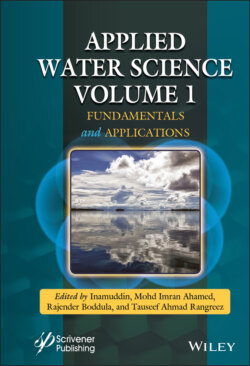Читать книгу Applied Water Science - Группа авторов - Страница 38
2.3.4.2.6 Adsorption
ОглавлениеThe adsorption process involves transportation of the solute in the bulk liquid phase, followed by film and pore diffusion, and culminating in adsorption onto the solid phase. Adsorption involves electrostatic interactions, hydrogen bonding, charge-transfer complexation, van der Waals forces, and occasionally strong chemical bonding and electron transfer producing electrostatic interactions (Yahya et al., 2018). The efficiency of adsorption is usually determined by the surface area, pore volume, porous structure, and surface functional groups of the adsorbent. It also depends on the chemical characteristics of the pharmaceutical compounds (Patel et al., 2019). The benefits of the adsorption process for water treatment include low capital investment, low pollutant concentrations can be removed, batch and fluidized/fixed-bed reactor systems can be used, and there are possibilities of regenerating adsorbents for multiple reuse (Gisi et al., 2016; Rosales et al., 2017). Compared to other methods, adsorption removes a wide range of pharmaceuticals and produces less toxic products. Adsorption is also applicable to a wide range of aqueous systems with variable concentration of pollutants (Oliviera et al., 2017). Adsorbents, including biosorbents, activated carbons, biochar, mineral oxides, polymeric materials, and nanomaterials, have been used for the removal of pharmaceuticals in aqueous systems.
